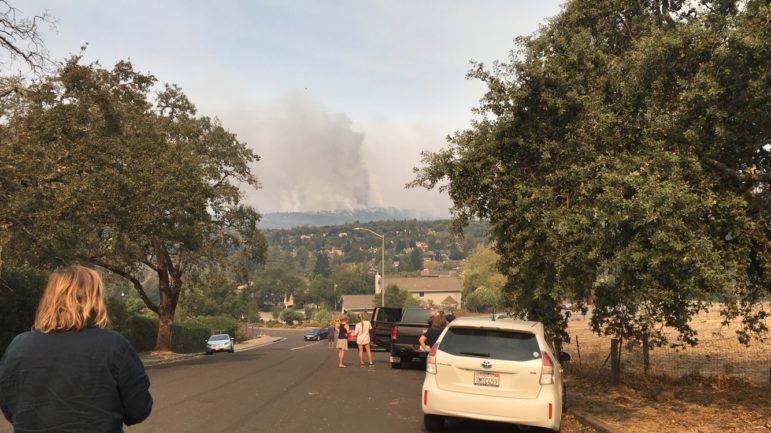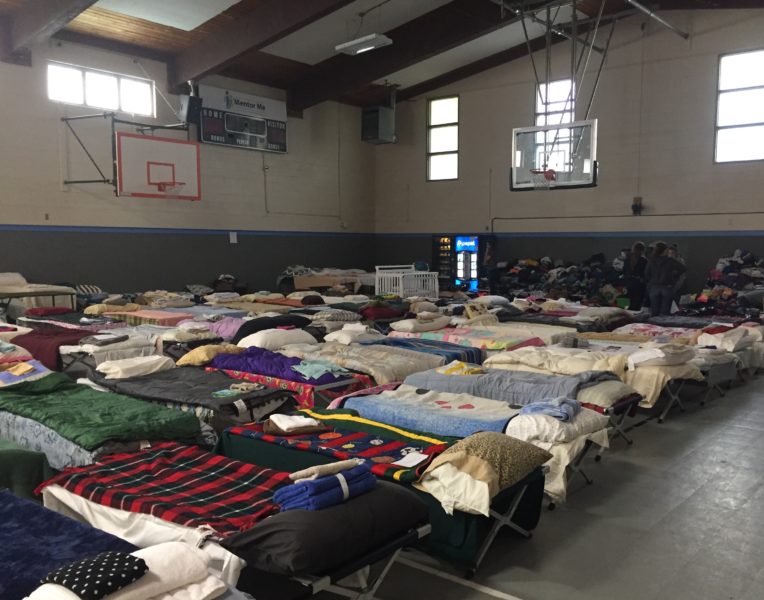

A series of fires broke out throughout the North Bay on Oct. 8, decimating much of the Napa, Lake, Sonoma, Mendocino, Butte and Solano counties. At the time of the Outlook’s print deadline, the fires had reportedly killed at least 41 people while destroying over 5,700 buildings.
Senior Jackson Harrold was at his Sonoma County house when the fire broke out.
“At 4:30 a.m., [my dad] woke up again, which was pretty lucky because he looked out the window, and there was just a ton of fire all around,” he said. “He just basically yelled and woke all the rest of our family up, and we ran outside with the dog and got in the car.”
Harrold’s family left mostly all their belongings at the house, not even putting on their shoes before escaping the flames, he said. Harrold’s father returned Tuesday, and their house is still standing. However, many people were not as lucky.
“We went outside to the front, and at the next house over, it was just a wall of flames,” Harrold said of his escape. “About half of the houses on our hill burned to the ground.”

Alumnus Brandon Leong, a freshman at Sonoma State University, woke up at 3 a.m. Monday to texts, calls and emails from his school to evacuate. By 6 a.m. he was driving away from campus toward San Mateo.
“I was really scared because this is the first emergency situation I’ve been in where I left and evacuated,” Leong said. “And to add on to the pressure of leaving, I was by myself and had to make the decision without my parents.”
However, many residents of the affected counties didn’t have anywhere to go, and have been residing in shelters since the fires broke out. A.J. Shaheen, a senior at Petaluma High School, has been volunteering at these shelters every day.
“Mostly [it’s been] organizing donations,” he said. “At the Sonoma-Marin Fairgrounds, the organizers of the volunteers were actually asking us to play with kids. If you think about it, [it] is really incredible that that’s a service to provide. You think about provisions — you don’t think about the social needs of evacuees.”
Although the shelters, located throughout the area, had to be organized quickly, survivors as well as outsiders have come together to provide aid to the displaced.

“[The shelters] seemed pretty disorganized at first, not much communication going on,” said Petaluma High School senior Luke Weitzenderg, whose uncle lost his house in the Tubbs Fire. “Some shelters were overflowing, some were empty … They eventually started turning away people’s donations and people’s offers to help because there were just too many people helping.”
Rather than staying in shelters, others elected to escape the area altogether. Borel alumna Iris Bica, a senior at Maria Carrillo High School in Santa Rosa, couchsurfed for a few nights before her family settled into a hotel in South San Francisco.
“All the hotels from Santa Rosa to here are filled up,” she said. “This is the closest one we could find.”
Although it broke out well over a week ago, the fire is far from contained. Given the magnitude of the damage and the high wind speeds, those in the vicinity of the fire are prepared for the worst.
“I packed a bag, we got some distilled water, threw it in the car just in case,” Weitzenderg said. “Better safe than sorry.”
Although San Mateo is over a hundred miles away from the fire, its effects are still apparent at Aragon. Many students, like sophomore Anugra Julian, wore masks last week to prevent themselves from inhaling smoke.
“I was really scared because this is the first emergency situation I’ve been in where I left and evacuated”
“I got [my mask] from the school nurse,” he said. “[Without one] it was hard to talk to people or walk in a straight line without coughing every four seconds.”
Others, such as senior Melanie Moore, have gotten sick from the poor air quality.
“My lungs and chest felt heavy from all the smoke,” she said. “Then it moved to my nose and I lost my voice.”
With the fires still blazing throughout the North Bay, this looks to be one of the most devastating natural disasters in California history.
Additional reporting by Victoria Fong.



